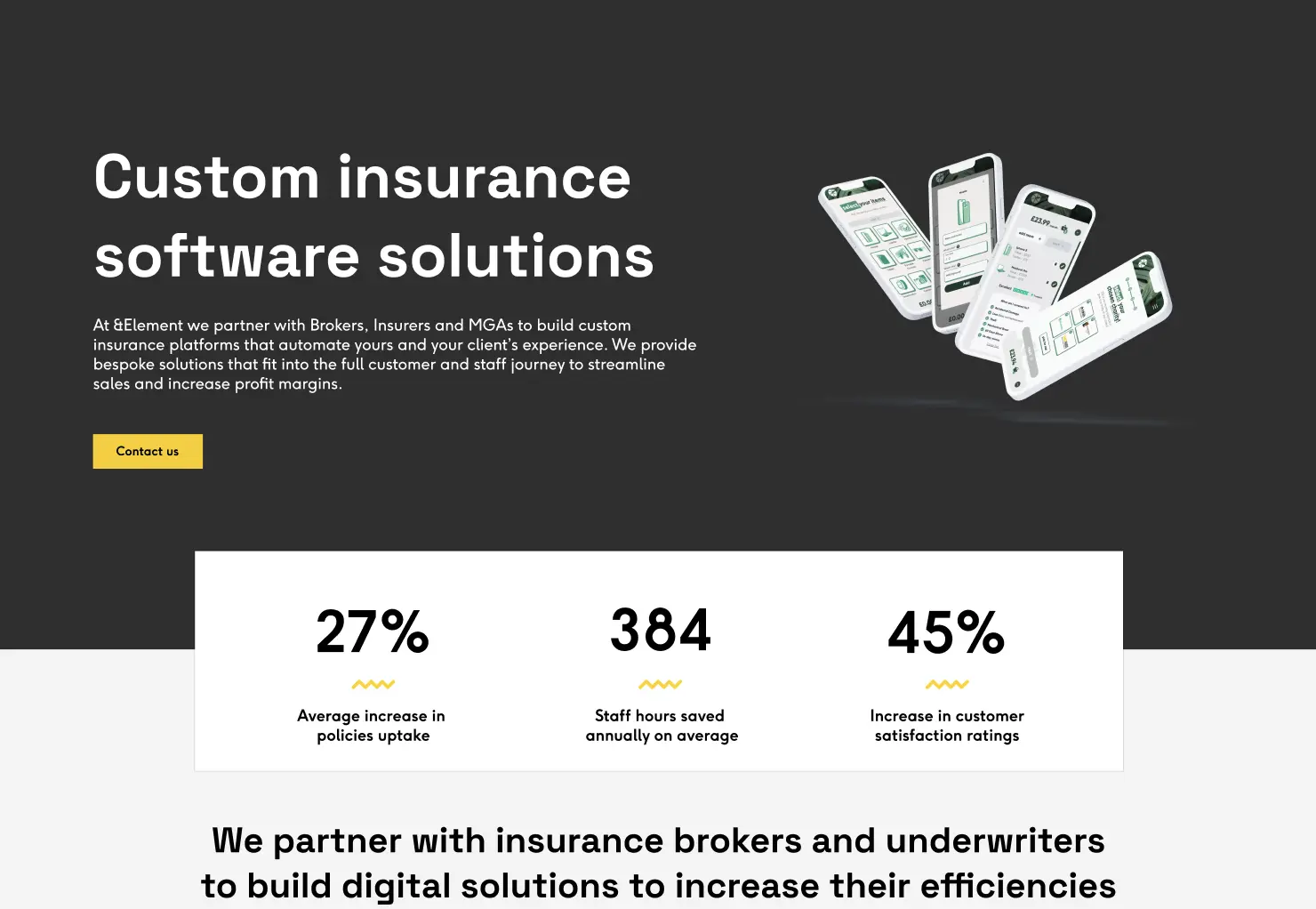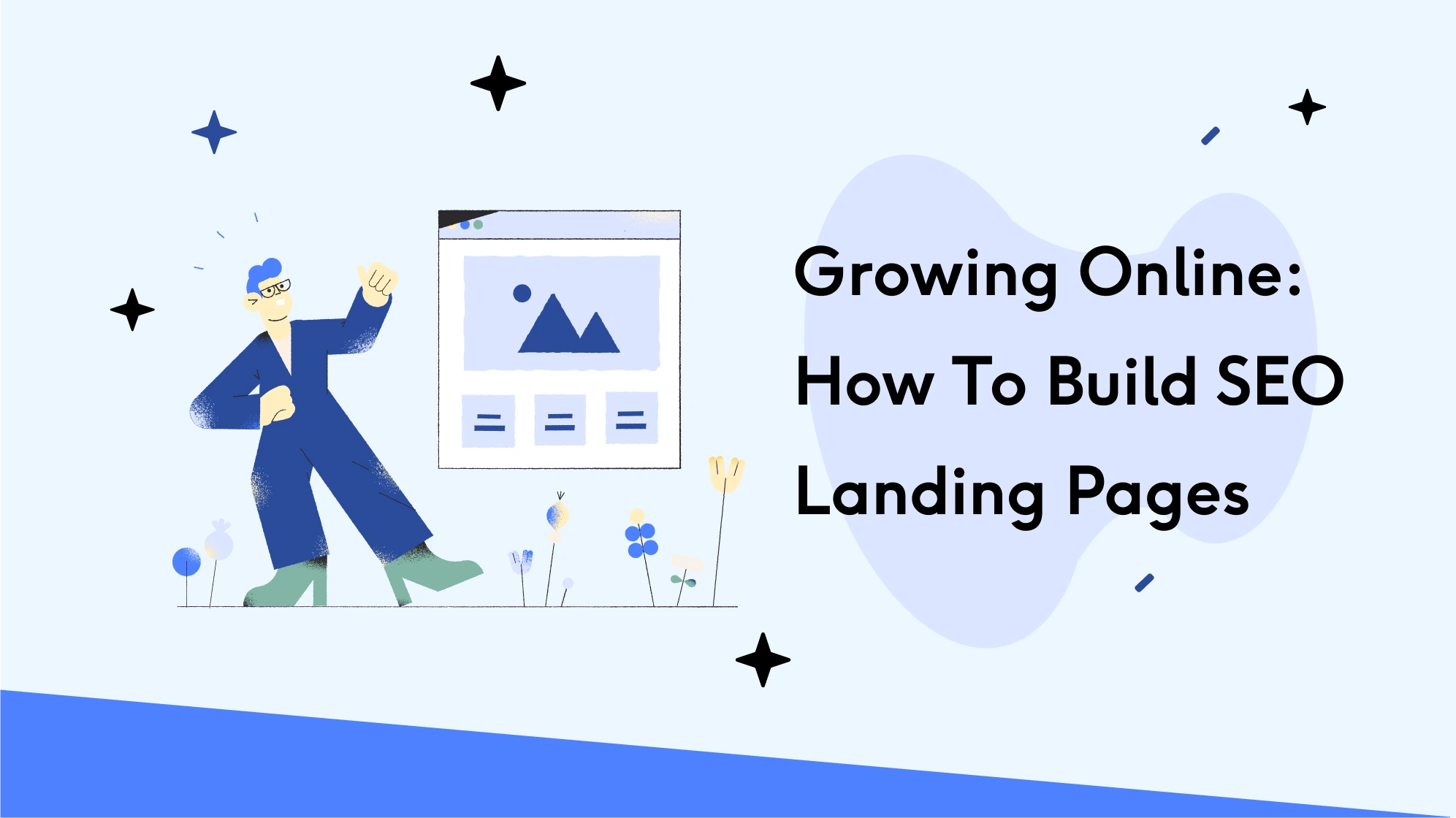Having a higher number of landing pages can significantly boost lead generation. Companies that utilise 10 to 15 landing pages see a 55% increase in leads, while those with 40 or more landing pages experience up to 12 times more leads compared to those with fewer than 5 landing pages.
But what are they and how to build them?
In this blog post we'll explore the essential elements of effective landing pages, discuss best practices for design and user experience, and provide tips for optimising your pages for better performance.
Blog Overview:
What are Landing Pages?
Types of Landing Pages
Goals of Landing Pages
Key Elements of Landing Pages
Content
Design
Credibility
How to ensure your page is successfully ranking online?
Analytics tools
SEO optimisation
Other resources
What are Landing Pages?
A landing page is a standalone web page created specifically for a marketing or advertising campaign. It’s where a visitor “lands” after clicking on a link in an email, ad, or search engine result.
They can serve different purposes, some of them simply directing users to product pages or pursue visitors to stay longer on your website.
There are four different types of landing pages:
Click Through | Lead Generation | Sales Pages | Squeeze Pages |
Aim to persuade visitors to click through to another page | Designed to capture user information, such as email addresses. | Focused on getting visitors to purchase a product or service. | Aim to capture a minimal amount of information from visitors, like an email address. |
Goals: The primary goals of a landing page are to capture leads, drive sales, and promote products or services effectively.
Key Elements of a Successful Landing Page

There are a few key aspects of landing pages that make them different from your regular website design. The Landing page is suppose to capture the user attention with a title explains the product or the services and a quick call to action that either redirects the user or directly sell a product.
Headline and Sub-headline
The headline is the first thing visitors see. It should be clear, compelling, and convey the main benefit of your offer. The sub-headline should support the main headline by providing additional context or highlighting a key benefit.
Lead Capture Form
Design your form to be as simple as possible. Only ask for essential information to reduce friction and increase conversions.
Visuals
High-quality images and videos can capture attention and make your offer more appealing. Ensure visuals are relevant and support the message.
Benefits and Features
Clearly outline what visitors will gain from your offer. Highlight the benefits first, then the features.
Consistency
Ensure the landing page aligns with the ad or link that brought visitors there. Consistency in messaging and design helps maintain trust and clarity.
Call to Action (CTA)
Your CTA should be prominent, clear, and compelling. Use action-oriented language that tells visitors exactly what to do, such as “Sign Up Now” or “Get Started Today.”
Understanding Your Audience
Tailor your message to your target audience. Understand their needs, pain points, and what motivates them.
Clarity and Conciseness
Keep your message clear and to the point. Avoid jargon and complex language.
Persuasive Language
Use persuasive, action-oriented language to encourage visitors to take action.
Addressing Pain Points
Show how your offer solves a problem or meets a need.
Social Proof
Incorporate testimonials, reviews, and trust signals to build credibility and trust with your visitors.
Simplicity
Keep the design clean and focused on the main goal. Avoid clutter and distractions.
Navigation
Remove or minimise navigation menus to keep visitors focused on the goal.
Loading Speed
Fast loading times are crucial. Optimise images and minimise code to improve speed.
Mobile Optimisation
Ensure your landing page is responsive and works well on all devices.
Accessibility
Make your landing page accessible to all users, including those with disabilities. Use appropriate contrast, alt text for images, and keyboard-friendly navigation.
SEO Optimisation
To make sure your page hits the necessary word count implement the Frequently Asked Questions block. This will help you add keywords to your page and optimise SEO.
How to ensure your page is successfully ranking online?
Ranking on search engines is one of the most important aspects of marketing. You need to know how to write content optimised for SEO, how to find suitable keywords and how to measure the success of your changes and projects.
You can implement tools such us Semrush, Google Analytics and the Lighthouse report to see how to improve your landing pages as time goes by.
You can read more about keyword research, meta data and what is a lighthouse audit on our blog.
Conclusion
Having a higher number of landing pages can significantly boost lead generation, with companies utilising 10 to 15 landing pages seeing a 55% increase in leads, and those with 40 or more landing pages experiencing up to 12 times more leads compared to those with fewer than 5 landing pages.
To use this potential, you have to understand what landing pages are and how to build them effectively. This blog post has delved into the key elements of successful landing pages, including compelling headlines, clear CTAs, high-quality visuals, and user-friendly lead capture forms. It has also covered best practices for design and user experience, such as maintaining simplicity, ensuring fast loading speeds, and optimising for mobile and accessibility.
By implementing tools like Semrush, Google Analytics, and Google Lighthouse, you can continuously monitor and improve your landing pages. Incorporating Frequently Asked Questions (FAQs) can also help enhance your page's SEO and user engagement.
Ultimately, creating effective landing pages involves understanding your audience, crafting persuasive content, and regularly optimising your pages based on data-driven insights.
So start designing and look at our helpful resources to learn more about digital marketing and local SEO.
